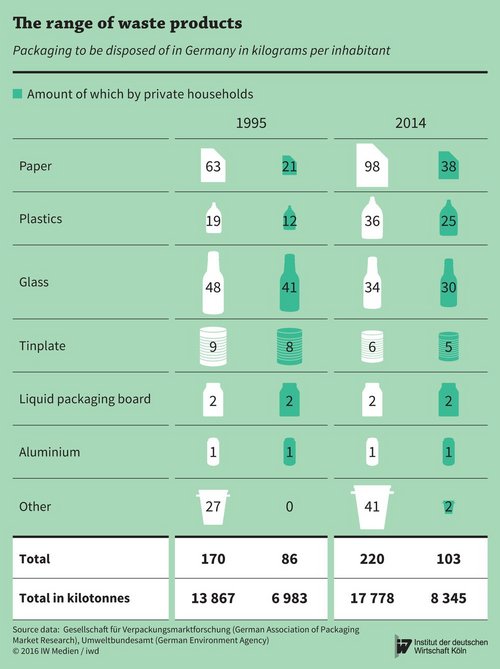The European Commission is taking serious steps towards realising the concepts of ‘recycle, repair and re-use’ and avoiding waste at all stages of the value chain with its EU circular economy package (December 2015). Besides setting new recycling and landfilling targets to enforce member states to climb up the waste hierarchy, the EU Commission also intends to harmonise the measuring of recycling and re-use rates in the European Union to make more transparent, how much is effectively recycled.
A load of rubbish
Currently, many EU Member States, including Germany, consider any waste that arrives at a recycling facility as recycled – regardless of whether it actually is recycled or not. The EU Circular Economy Package plans not only to include a common European recycling target of 75 per cent for packaging waste, but also to consider only those waste products as `recycled` that are effectively recycled.
Secondary raw materials are produced by recycling discarded material, thus turning waste into a domestic source of raw material and preserving natural reserves. However, material recycling does not work equally well for all types of waste: while only half of the plastic waste is recycled, the recycling rates for steel, glass, aluminium and paper packaging are around 90 per cent respectively.
In 2014, private households in Germany produced over eight million tonnes of packaging waste in total – equivalent to more than 100 kilograms per person. The majority of this waste is paper, board or cardboard packaging. New consumer and shopping behaviour, such as online shopping, as well as an increase in single and two-person households and take-away products are responsible for the strong upward trend in generating paper, and also plastic, packaging waste.
It is virtually impossible to avoid packaging waste in everyday life, but the volumes generated vary enormously in the different EU countries. ‘European champion’ is Germany with 220 kilograms of commercial and private waste per inhabitant – amounting to almost 18 million tonnes of packaging waste in total. Other EU countries, especially in Eastern Europe, generate a lot less packaging waste.
For years, the German Government has failed to increase the returnable packaging rate as scheduled. The percentage of disposable packaging is rising sharply. In a draft for a new national packaging law, the German Federal Ministry has abandoned the target rate for returnable packaging, previously set at 80 per cent, altogether for the Environment. Instead, signs in shops are supposed to indicate in future whether bottles are returnable or disposable. In addition, many manufacturers have voluntarily committed to improving the labelling of disposable packaging.
More on the topic

Digital Product Passport – Enabler of the Circular Economy
In a circular economy, a new understanding of economic activity and an alternative approach to raw materials are required. Resources should be used for as long as possible in order to reduce both the material and energy consumption as well as the waste and ...
IW
Beyond the Pandemic: How Can Countries Pave the Way for a Global Green Recovery?
As governments across the world continue to face the challenge of tackling Covid-19, the current crisis also presents an unprecedented opportunity to reboot global economies in a manner that builds more sustainable, inclusive and resilient societies, in line ...
IW
